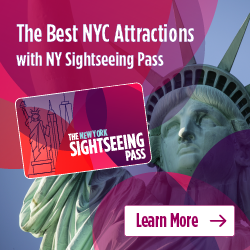
David Stott Building

| David Stott Building | |
|---|---|
 | |
 | |
| General information | |
| Type | Office |
| Architectural style | Art Deco |
| Location | 1150 Griswold Street Detroit, Michigan |
| Coordinates | 42°19′55″N 83°02′55″W / 42.3320°N 83.0486°W |
| Completed | 1929 |
| Owner | Bedrock Detroit |
| Height | |
| Antenna spire | 138 m (453 ft) |
| Roof | 133.1 m (437 ft) |
| Top floor | 131.8 m (432 ft) |
| Technical details | |
| Floor count | 38 stories |
| Floor area | 18,784 m2 (202,190 sq ft)[1] |
| Design and construction | |
| Architect(s) | John M. Donaldson of Donaldson and Meier |
| Main contractor | Martin & Krausmann Co. |
David Stott Building | |
| Part of | Capitol Park Historic District (ID99000338) |
| Designated CP | March 18, 1999 |
| References | |
| [2] | |
The David Stott Building is a 38 story high-rise apartment building with office space on floors 2-6 and retail space on the first floor. The "Stott" was originally built as a class-A office building located at 1150 Griswold Street (corner of Griswold and State Streets) in Downtown Detroit, Michigan, within the Capitol Park Historic District. It was designed in the Art Deco style by the architectural firm of Donaldson and Meier and completed in 1929. Bedrock Detroit owns and manages the building which began leasing in late 2018 and includes 107 apartment homes and 5 floors of commercial office space. [3]

History
The skyscraper is named after David E. Stott (1853–1916), an English-born businessman who owned a mill company, the David Stott Flour Mills, and was on the boards of multiple other companies, including the Stott Realty Company.[4][5][6] First conceived in 1921, the tower was built by the Stott Realty Company in honor of its founder twelve years after his death.[5] Construction began on June 1, 1928, and the tower opened on June 17, 1929; it cost $3.5 million (equivalent to $49,100,000 in 2023) to build.[7] The advent of the Great Depression brought a halt to all major construction in Detroit: as a result, the David Stott Building was the last skyscraper built in the city until the mid-1950s.[8]

The building ceased operations in 2010 and was sold later that year. The new owner proposed a conversion of the building to Mixed-Use and opened a bar called SkyBar Detroit in the lobby with intentions to open a private lounge in the 33rd floor penthouse. While the bar opened, the private lounge and Mixed-Use conversion were not completed. The property was sold again in 2013 to the DDI Group who closed the bar. In 2015, the property was again sold to Dan Gilbert who ultimately realized the plan to re-open the David Stott Building as a mixed-use development. [9]

Architecture
The tower stands 38 stories tall, with three additional floors below street level; when it opened, it was the fourth tallest building in downtown Detroit.[7] It was designed by architect John M. Donaldson of Donaldson and Meier in the Art Deco style.[7] The building's design, characterized by a strong sense of verticality, was profoundly influenced by Eliel Saarinen's 1922 Chicago Tribune Tower design.[10][3] Verticality is emphasized by the near absence of ornamentation, and by a relatively small footprint which yields a slender profile.

The building rises from a reddish granite base and incorporates buff-colored brick, marble (on the first three floors from the street), and limestone as its surface materials.[7] As with many of the other Detroit buildings of the era, it boasts architectural sculpture by Corrado Parducci.[7] The building features a series of setbacks from the 23rd floor upward.[11] The tower's tiered summit is brightly lighted with uplights on each facade and complements the similarly lighted Westin Book Cadillac Hotel downtown. The David Stott Building neighbors 1001 Woodward to the southeast.

Gallery
-
Main entrance, sculpture by Parducci
-
Compuware Headquarters in the bottom left
-
Downtown Detroit from Windsor. The David Stott Building stands at the center
-
The Stott from across Washington Boulevard
-
Detailing of the tiered roof
See also
References
- ^ "David Stott Building". Skyscraper Center. CTBUH. Retrieved July 7, 2022.
- ^ "David Stott Building". SkyscraperPage.
- ^ a b Hill, Eric J.; John Gallagher (2002). AIA Detroit: The American Institute of Architects Guide to Detroit Architecture. Detroit: Wayne State University Press. ISBN 0-8143-3120-3. p. 78.
- ^ Burton, Clarence M.; Stocking, William; Miller, Gordon K., eds. (1922). The City of Detroit, Michigan, 1701–1922. Vol. 5. Detroit–Chicago: The S.J. Clarke Publishing Company. p. 771.
- ^ a b Korom, Joseph J. (2008). The American Skyscraper, 1850-1940: A Celebration of Height. Boston: Branden Books. ISBN 978-0828321884. pp. 374–375.
- ^ "David Stott Building: A LEGO creation by Jim Garrett : MOCpages.com". Retrieved July 17, 2009.
- ^ a b c d e David Stott Building. Historic Detroit. Retrieved January 4, 2014.
- ^ Tottis, James W. (2008). The Guardian Building: Cathedral of Finance. Detroit: Wayne State University Press. ISBN 978-0814333853. p. 41.
- ^ David Stott Building
- ^ Dempsey, Jack (2014). Capitol Park: Historic Heart of Detroit. Charleston, S.C.: The History Press. ISBN 978-1625848673. p. 63.
- ^ "David Stott Building, Donaldson & Meier, 1929". Preservation: Detroit Art Deco Highlights. Detroit Area Art Deco Society. Retrieved August 6, 2016.
Further reading
- Kvaran, Einar Einarsson, Architectural Sculpture of America, unpublished manuscript.
- Meyer, Katherine Mattingly and Martin C.P. McElroy with Introduction by W. Hawkins Ferry, Hon A.I.A. (1980). Detroit Architecture A.I.A. Guide Revised Edition. Wayne State University Press. ISBN 0-8143-1651-4.
{{cite book}}: CS1 maint: multiple names: authors list (link) - Sharoff, Robert (2005). American City: Detroit Architecture. Wayne State University Press. ISBN 0-8143-3270-6.
- Savage, Rebecca Binno; Greg Kowalski (2004). Art Deco in Detroit (Images of America). Arcadia. ISBN 0-7385-3228-2.
External links
- "David Stott Building". SkyscraperPage.
- "Emporis building ID 118517". Emporis. Archived from the original on July 16, 2020.
- Art Deco architecture in Michigan
- Art Deco skyscrapers
- Downtown Detroit
- Skyscraper office buildings in Detroit
- Buildings with sculpture by Corrado Parducci
- Office buildings completed in 1929
- Office buildings on the National Register of Historic Places in Michigan
- National Register of Historic Places in Detroit
- Historic district contributing properties in Michigan
- Rock Ventures
- 1929 establishments in Michigan
See what we do next...
OR
By submitting your email or phone number, you're giving mschf permission to send you email and/or recurring marketing texts. Data rates may apply. Text stop to cancel, help for help.
Success: You're subscribed now !









